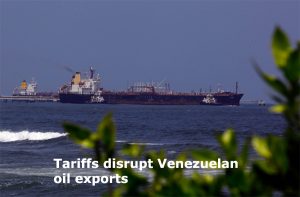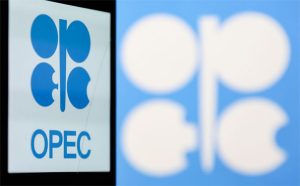MarketWatch
U.S. taps Strategic Petroleum Reserve in global effort to push down oil prices
– U.S. extends order to keep activity at a minimum until June 1
– Decision comes after a key regional election in Venezuela
By William Watts / MarketWatch
SAN FRANCISCO
Petroleumworld 11 25 2021
Oil futures rose sharply Tuesday after the Biden administration announced a coordinated, U.S.-led effort by energy consuming countries to release strategic crude reserves. What gives?
First off, a move had been well-telegraphed. News reports speculating on potential releases from the Strategic Petroleum Reserve and talk of a coordinated effort that would include China and others circulated in recent weeks, and were widely cited as a factor in crude oil’s pullback in price from 7-year highs set last month.
West Texas Intermediate crude for January delivery CL00, -0.71% CLF22, -0.71%, the U.S. benchmark, jumped $1.75, or 2.5%, to close at $78.50 a barrel. Global benchmark Brent crude BRN00, -0.53% BRNF22, -0.55% surged $2.61, or 3.3%, to $82.31 a barrel.
But there’s more to the bounce than traders simply fading a piece of long-anticipated news, analysts said.
The size of the U.S. release at 50 million barrels was larger than the 35 million barrels that had been widely anticipated, said Rob Haworth, senior investment strategist at U.S. Bank Wealth Management. But details of the plan, including the use of swaps, which means oil purchased from the SPR must be returned in the next one to three years, may have blunted the impact somewhat, he said, in a phone interview.
Details:
“The reality is the impact is going to be modest and the story is still one of what is demand going to do,” Haworth said, noting that transportation data, including U.S. Transportation Security Administration airline passenger numbers, remain robust.
Haworth said demand was unlikely to be significantly deterred by a rise in COVID-19 cases and renewed restrictions in Europe, noting that recent upticks in cases haven’t put lasting pressure on oil demand.
So how much crude is set to hit the market? Noting that India has already announced plans to release 5 million barrels, while Japan is expected to release around 4 million barrels, participation by China, South Korea and the U.K. would bring the total number of barrels set to be released to 65 million to 70 million, estimated analysts led by Helima Croft, global head of commodities strategy at RBC Capital Markets, in a note.
RBC CAPITAL MARKETS
“It is our understanding the administration is looking to keep prices below $80 and believe they have the ability to do another release of similar magnitude through the exchange mechanism,” the RBC analysts wrote. “They are keenly focused on reducing gasoline and diesel prices ahead of the holidays, but also see this as part of a broader strategy to deal with inflationary pressure and supply chain challenges.”
Some analysts were underwhelmed by the overall scope of releases. South Korea, Japan and the U.K. were expected to release details of their plans in coming days, while traders also awaited word from China.
“The market is up on the lame nature of the U.S. swap program, the small numbers actually involved, and the lack of commitment by the Chinese,” said Robert Yawger, executive director of energy futures as Mizuho Securities, in a note.
Read: How will releasing 50 million barrels of oil affect gas prices at the pump? It might not have a big impact — here’s why
And then there’s OPEC+ — the Organization of the Petroleum Exporting Countries and its allies. The coordinated, U.S.-led effort has been widely described as a pushback by energy-consuming countries against the group’s sway over crude prices.
It comes after calls by Biden and administration officials for OPEC+ to speed production increases were rebuffed. OPEC+ has instead stuck to a plan to slowly raise output in monthly increments of 400,000 barrels a day.
How OPEC+ will respond is a market wild card. Oil futures rose Monday after Bloomberg reported that OPEC+ officials were prepared to rethink planned crude increases in the event of a coordinated release from strategic reserves. OPEC+ ministers are due to hold a monthly meeting next week.
Tuesday’s price action, however, could make OPEC+ less likely to put on the brakes.
If the coordinated release pushes prices below last week’s lows, OPEC+ would likely consider taking action, but “todays price action tells you they can wait and see,” Haworth said.
The RBC analysts said staying the course remains their base call for next week’s OPEC+ meeting, but said they couldn’t entirely rule out the possibility that Saudi Arabia could call for scaling back production increases in response to the coordinated release.
However, several Gulf states with close ties to the U.S. would likely oppose such action out of fear of political blowback from Washington, they wrote.
_____________
By William Watts from MarketWatch
marketwatch.com 11 24 2021
Copyright ©1999-2021 Petroleumworld or respective author or news agency. All rights reserved.
Petroleumworld.com Copyright ©2021 Petroleumworld.












